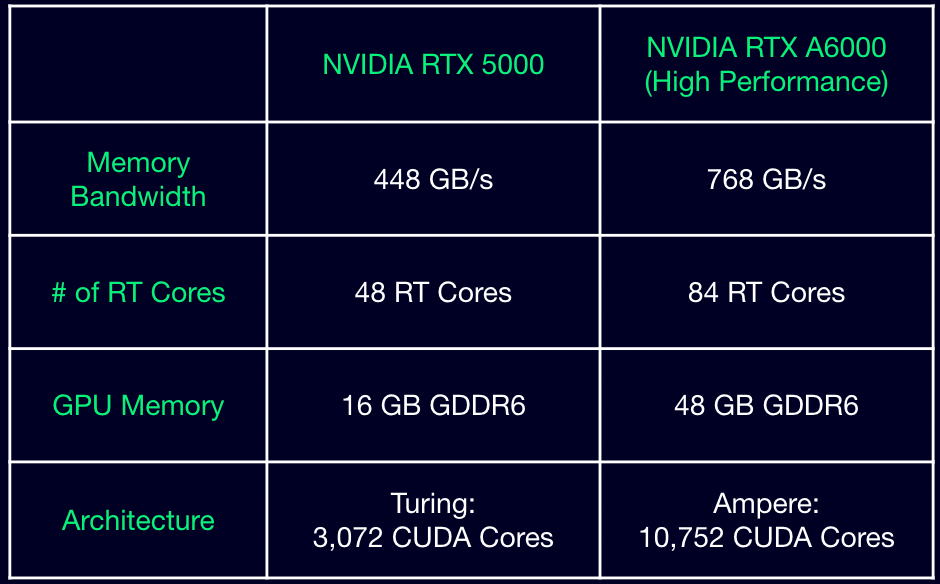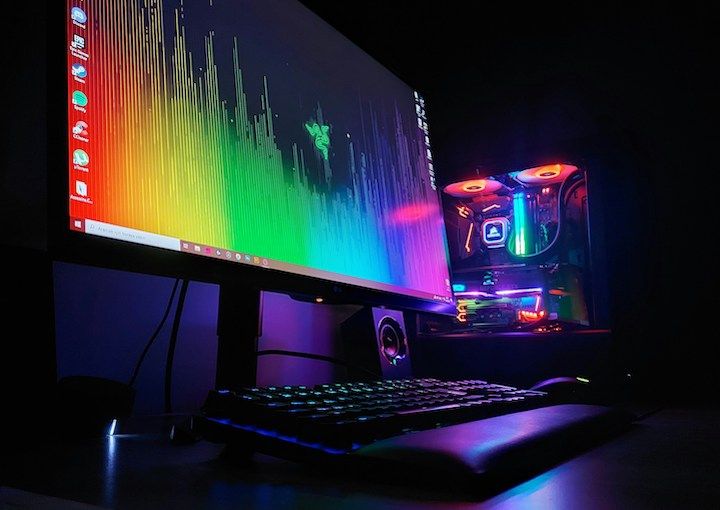In the realm of GPU technology, NVIDIA stands at the forefront, continually pushing the boundaries of performance and innovation. With the launch of our new High Performance CoreWeave provider, we are proud to now make two of their key GPUs offerings – the NVIDIA RTX 5000 and RTX A6000 – available through the PureWeb Reality™ platform.
Choosing between the RTX 5000 and the RTX A6000 for game development depends on several factors, including the complexity of the game, performance requirements, and budget considerations. Let's delve into scenarios where each GPU would excel.
Visual Rendering
Realistic scenes with stunning lighting and reflections require substantial computational power, which comes down to the number of RT Cores. Here the RTX A6000 shines with 84 RT Cores, significantly surpassing the RTX 5000's 48 RT Cores. These specialized cores enable real-time ray tracing, enhancing visual fidelity and immersive-ness in gaming, design, and professional applications.
Data Transfer
Visual rendering demands lightning-fast data transfer rates, which is owed to the memory bandwidth. The RTX A6000 excels with an impressive memory bandwidth of 768 GB/s, dwarfing the RTX 5000's 448 GB/s. This significant difference ensures smoother and more responsive performance, particularly in memory-intensive tasks such as high-resolution rendering and complex simulations.
GPU Memory
The RTX A6000 solidifies its superiority with a generous 48 GB of GDDR6 memory, providing ample room for storing large datasets and textures. This accommodation seamlessly meets the demands of modern workflows, whereas the RTX 5000's 16 GB of GDDR6 memory, while respectable, may prove limiting in memory-intensive scenarios.
Processing Power
Underpinning these GPUs is their architectural foundation, where the RTX A6000 boasts the Turing architecture adorned with a staggering 10,752 CUDA Cores. This abundance of processing power empowers users to tackle the most demanding computational tasks with ease, from deep learning to scientific simulations. Comparatively, the RTX 5000 features 3,072 CUDA Cores, which, while formidable, pales in comparison to the RTX A6000's computational prowess.

In essence, the NVIDIA RTX A6000 emerges as the undisputed champion, offering a 1.5X to 2X leap in performance over the RTX 5000 across various visual rendering metrics. Whether you're a professional seeking unrivalled productivity or a gamer craving unparalleled immersion, the RTX A6000 stands ready to elevate your experience to new heights. Harness the power of innovation and unlock your full potential with the NVIDIA RTX A6000 on the PureWeb Reality platform now.
Get in Touch to learn more about our new High Performance CoreWeave offering to take advantage of the RTX A6000.



